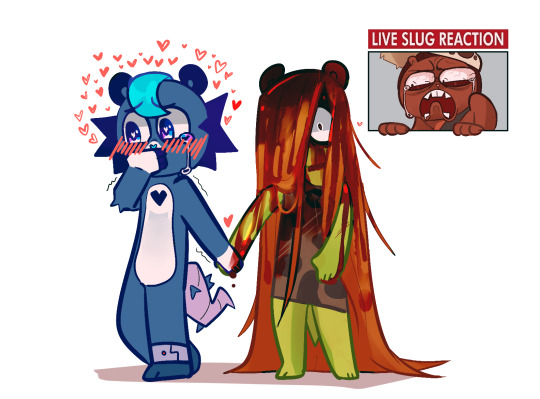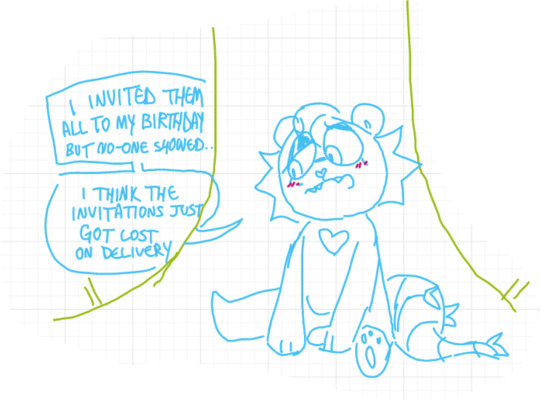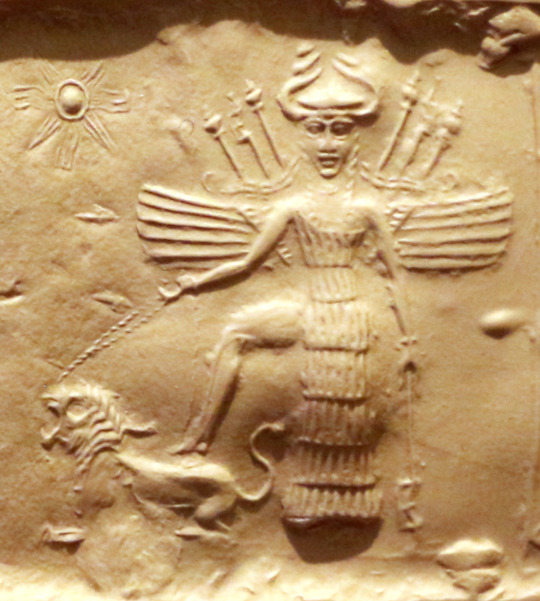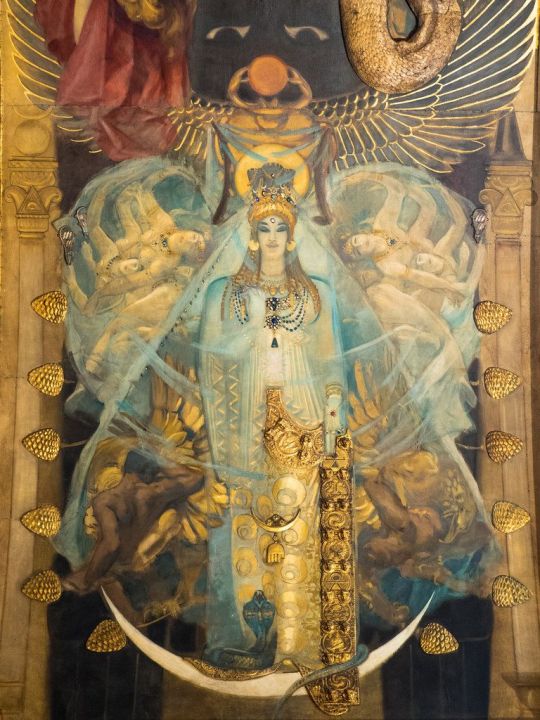#dumuzi likes it when she tells stories about her day
Explore tagged Tumblr posts
Text







Screwy feels a lot, Dumuzi feels very little, they fall in love <3
Dumuzi and Ugly Nergal belong to @herebecritters
#SURPRISE IM POSTING SCREWMUZI#i love these two so much#shipping on main whupsies#finally ive posted screwy so that means i can post all the art ive been hoarding#she means a lot to me#id die for her#dumuzi has felt nothing for so long but when screwy came around#her world got 🤏 a little bit brighter#dumuzi likes it when she tells stories about her day#screwy earnestly believes that she got to pet a unicorn today#it was nutty skewered on a small tree but screwy doesnt need to know that#dumuzi welcomes her escapism. reality is horrifying.#anyway enough ranting in the tags i just live em both so much#happy tree friends#htf#my art#whiteboard#htf screwy#htf dumuzi#ship art#screwmuzi#htf nergal
131 notes
·
View notes
Note
This Ugaritic myth post is honestly one of the best posts I've read those last months, genuinely impressed by your knowledge and dedication '^^ At the risk of sounding basic, may I ask for the same character breakdown for Inanna and Ereshkigal ? These days they are mostly known for their Fate versions but I'm really curious about what their original versions were like.
Inanna: How I feel about this character: I joked a few times that in greek mytholgy i like obscure interpretations of b list figures but in mesopotamian i like the main characters and i feel like this is the prime example of it - in every myth Inanna appears in, the world revolves around her. And it’s refreshing even today to see a female character in a myth who largely acts the same way male heroes do. Weird people online tend to try to recast her as a mother goddess or some innocent “holy virgin” or both often but to me it seems like arguably embracing how she actually is in myths makes for a more empowering image. She’s, simply put, fun to read about. All the people I ship romantically with this character: please read Inanna’s descent to evaluate my expert opinion that Inanna and Ninshubur are in love. I sort of wrote a story about it from Ninshubur’s pov but then felt awkward about it and didn’t post it. I talked about it before but the cameraderie between them reminds me of Gilgamesh and Enkidu - but as far as I can tell while interpreting the latter pair as a couple is common in modern times, nobody even brings Ninshubur up. My non-romantic OTP for this character: since I see Inanna’s descent, Inanna and Enki and Enki and the World Order as the core Inanna myths myself, the answer #1 is Enki - he might not actually be her father but given the similar approach to life both show in myths it’s easy to see him as her mentor at least. My hipster pick is Nininsinna who seems to be well respected by Inanna in a few myths. My unpopular opinion about this character: I don’t really care about Dumuzi. The love poems are nice and all but Dumuzi has the personality and charm of a faceless dating sim self insert in most myths he appears in. One thing I wish would happen / had happened with this character in canon: I wish there were more wacky adventure myths involving her and Ninshubur. There are the two I linked but I feel like the formula could work over and over and over again. Ereshkigal How I feel about this character: she sure is an underworld goddess with little cultic relevance... I don’t think she’s boring though, and the Nergal myth highlighting that she’s lonely and bitter because of it gives her a very human dimension. All the people I ship romantically with this character: only Nergal since I think for a modern audience in general - and for me specifically - the appeal of that myth lies in part in the fact they don’t really seem compatible with anyone else but instantly clicked together when they met. My non-romantic OTP for this character: Geshtinanna is described as acting as an underworld scribe while she spends the promised 6 months there in place of her brother Dumuzi, so I imagine Ereshkigal views her as her friend. Gesthinanna probably isn’t aware of it. My unpopular opinion about this character: there used to be a trend in scholarship back in the day which tried to make her into a Persephone paralel by inventing myths that don’t exist, not a fan of it - and it turns her from a middle aged professional (she’s Inanna’s -older- sister!) into a lost young girl which is lame. One thing I wish would happen / had happened with this character in canon: the two major myths she appear in form a coherent narrative but I wish there was something describing her whereabouts after marriage, and maybe interactions with other family members like Utu and Nanna.
12 notes
·
View notes
Text
Inanna – Sumerian Mother Goddess, Queen of Heaven and Earth

One of the longest lasting Goddesses from the ancient world is Sumer’s Inanna, who was revered in the Middle East for over 4,000 years. And even today in modern Islamic Iraq Inanna’s emblems of the reed knot and the date palm continue to have meaning to the people. [1]
Inanna’s origins are very very old and date back well into the Neolithic age. It is believed that the Goddess-revering Al ‘Ubaid culture brought Her imagery with them when they settled in the region south west of the Euphrates river as early as the 6th millennium BCE, i.e. 8,000 years ago. Her earliest temple was discovered in Uruk (Erech), Inanna’s main and longest lasting place of worship, and dates back to about 5,000 BCE.
In the early days of Her worship Inanna was still seen as the all-encompassing Mother Goddess. She was still revered as the source of the Upper and Lower Waters, as the Queen of Heaven, Earth AND the Underworld. As human consciousness – probably due to external factors – changed over the millennia, Inanna’s powers diminished. At first She was split into the Goddess of Life, represented by Inanna, and the Goddess of the Underworld, represented by Her sister Ereshkigal. Eventually She would be given a father who was said to have given Her Her powers.
According to earliest records from the 4th millennium BCE Inanna’s grandmother is Nammu, the primordial Goddess of the Sea. The Babylonians knew Her as Tiamat. Nammu created Heaven and Earth and gave birth to Ningal / Ninmah, the Goddess as the Moon. Ningal / Ninmah Herself created the first people. She also gave birth to Inanna who manifests as the planet Venus, and as Inanna is the daughter of Ninagal / Ninmah, so is Venus the daughter of the Moon.
True to Her heritage, Inanna is the Goddess of the Morning and Evening Star as well as the Moon. Her imagery include the lunar crescent horns and the 8-pointed star, the rosette, which represents the planet Venus. Her headgear consists of a horned crown enclosing a cone, which is symbolic for the sacred mountain.
Inanna is often depicted with wings and a serpent-entwined staff. This imagery tells of Her roots as an ancient Bird and Snake Goddess, the Creatrix of the Upper and Lower Waters and the Goddess of Life, Death and Renewal.
Inanna is often dressed in blue which, just as Her lapiz jewels, reflects the blue of the Upper Waters or “The Deep” as the Sumerians referred to space. In fact they saw the sky as being a manifestation of the Goddess with the clouds being Her breasts and the rain Her milk. Inanna’s necklace is described as the rainbow and Her girdle as the zodiac.
Inanna is associated with the gate to cow-byres and sheepfolds, the gate representing Her vulva and the cow-byre or sheepfold Her womb. In ancient Sumer two bundles of reeds with curved ends (“Inanna’s Knot”) were placed at the entrance of Her storehouses and later Her temple Eanna in Uruk (Erech) to symbolise the Goddess.
Inanna’s sacred animals include the lioness and the cow, the former representing Her powers – She is able to tame wild lions! – and revealing Her as Goddess of the Animals, while the latter represents Inanna’s life-giving and nurturing aspect.
In her life-giving aspect Inanna’s birds include the white lunar dove and the swallow. In Her aspect as Death-Bringer She is associated with the viper and the scorpion, but also the owl, one of Her names being “nin-ninna” or “Divine Lady Owl”
Inanna, the Great Mother Goddess of the Sumerians has many titles such as:
“Queen of Heaven and Earth” “Priestess of Heaven” “Light of the World” “Morning and Evening Star” “First Daughter of the Moon” “Loud Thundering Storm” “Righteous Judge” “Forgiver of Sins” “Holy Shepherdess” “Hierodule of Heaven” “Opener of the Womb” “Framer of All Decrees” “The Amazement of the Land” “The Green One” “She of the Springing Verdure” “Queen of Stall and Fold” [2]

Although Inanna is a Goddess of Life and Death, later mythology passes Her dark moon aspect on to Her sister Ereshkigal who once having been a Corn Goddess becomes the Goddess of the Underworld. This changeover has much to do with a changing attitude towards death and the life cycle. While during the Neolithic and the early Bronze Age life was seen as cyclical with death not being the final end but rather a resting stage before rebirth, in later years as humanity distanced itself more and more from the natural world, the understanding of the Underworld changed from it being the womb of the Goddess to a place of no return. Ereshkigal is the Ruler over the Sumerian Underworld. However, some of the old cyclical beliefs remained even during the later Bronze Age, as late Sumerian mythology tells of how Ereshkigal gives birth to new life.
In Her capacity as life-giving Goddess Inanna is all about fertility and abundance. This is the aspect of Her that today we most associate with the Goddess as Venus.
As Queen of Earth Inanna is Goddess of grain, vine, date palms, cedar, the sycamore fig, the olive and the apple tree. Her temple towers known as ziggurates were large storehouses from where Her priestesses would watch over the fields, fisheries and livestock. They would accept donations from the people and share them with everyone. All incomings and outgoings would be recorded by them on clay tablets using reed styluses.
The High Priestess or Entu was seen not just as Inanna’s representative on Earth, but as the Goddess’s incarnation. Every autumn at the new year she would select a young man as her lover-consort to celebrate the Sacred Mating (Greek “Hieros Gamos” = Sacred Marriage). Through the love-making of the Entu and the man, who would become the king for the next year, the fertility of all life on Earth would be assured. Any children that were born of this union were considered to be half divine and half human, just as the hero Gilgamesh was thought to have been.
Just as Inanna is the Hierodule of Heaven, so were Her priestesses the hierodules of Earth. Hierodule is a Greek word that means “sacred work” or “servant of the holy”. Fertility and life is how the Goddess manifests Herself on Earth. [In most cases] Sexuality is the means by which fertility and thus new life comes about. In order to honour Inanna and to help keep the Earth a rich and flourishingh place, Her priestesses would re-enact the sacred act of lovemaking with Inanna’s worshippers at Her temples. The feelings of ecstasy experienced were seen as a divine state of bliss. Unfortunately, when Sumer with her long-hidden secrets was discovered not so long ago, the worldview of the archaeologists and anthropologists was clouded by Christian teachings who misunderstood the sacred role of hierodule and called Inanna’s priestesses “temple prostitutes” or “harlots”.

Inanna is the Queen of Heaven, her celestial manifestations being the Moon and the planet Venus. Like Isis in Egypt the star Sirius is sacred to Her as are the constellations Virgo and Scorpio.
Inanna is the Goddess of Death and Destruction. She is a Goddess of the Storm who represents the raw, unbridled destructive power of nature. Inanna is also known as “the Dragon” and is depicted as such with venom spewing from its mouth. In Her capacity as Destructress She is also represented by a lion-headed thunder bird known as “Imdugud”. [3]
Inanna is the Goddess of Natural Law and Justice. She is the Bringer of the “me”, the Sumerian Tablets of the Law. Inanna is just and compassionate. Her gifts to humankind include civilisation, wisdom and prophesy. [4]
As said before, at the start of the Bronze Age humans still saw themselves as being completely part of nature and therefore the Goddess. However, as time went by and our consciousness and self-awareness increasingly developed we felt more and more separate from the source. While initially humans saw death not as an end but just as another step on the cycle of life, with the increasing separation from nature came the realisation that while life in general continues indefinitely, the inidividual life will not. The Ancients described this in terms of a permanent life source – Ka soul or Zoe – and the many varieties of temporary life – Ba soul or Bios – the latter of which was believed to return to the source after death. The permanent life source was experienced as the Goddess and that of the temporary life force that is born from Her and returns to Her after death was represented by Her son-lover-consort. The life and death of the son-lover contains the lunar myth of birth, growth, decay and death. It also represents the Wheel of the Year with the god or son-lover being symbolic for the vegetation that grows and dies with the seasons. By the end of the Bronze Age rebirth was no longer envisioned for the individual but reserved only for goddesses and gods.
In Sumerian mythology this story is told through the birth and death of Dumuzi, the son-lover of the Goddess Inanna. His name literally means “faithful son”, but being a vegetation god he was also referred to as “The Green One”. He is a shepherd, “Lord of Life” and “Lord of the Net”. As “Bull of Heaven” the bull is sacred to him, but so are the ram and the goat. In Sumer the date palm which was the Tree of Life was associated with Dumuzi, as were grains, especially barley. Inanna’s son-lover was identified with the harvest and all the produce that was stored inside Her temples.
Every year in the autumn when in Mesopotamia the fertile raining season started, Inanna would join with Dumuzi in the rites of the sacred mating / marriage. This would ensure the fertility of the land. At the onset of the summer in July when the Sun would dry up the land and burn the crops, Dumuzi would die and enter the Underworld.
The story of Dumuzi’s death is interlinked with Inanna’s Descent. As said before, at some point during the Bronze Age people stopped believing in the uninterrupted cycle of life and death for themselves. The Underworld no longer was the womb of the Goddess, but instead became “The Land of No Return”. However, Inanna’s priestesses were aware of this split between the Upper and Lower Waters. Just as in ancient Greece every year many Sumerians would re-enact the descent of the Goddess into the Underworld in order to reunite their own consciousness with their unconscious and regain completion. It was a shamanic journey for both the Goddess and Her initiates.
The story of Inanna’s Descent involves the Goddess visiting and re-uniting with Her dark self or sister Ereshkigal. It is very much a lunar myth of the dark moon. On the way Inanna encounters seven gates – the number of days of the waning moon – where She has to give up the seven regalia of Her office. When She finally meets Her sister, She dies and has to hang on a hook for three days – the number of days of the dark moon. During that time Ereshkigal, the Dark Moon Goddess or Inanna’s dark moon aspect, gives birth to new life. Eventually the Queen of the Underworld agrees to let Inanna return to the world above, but only on the condition that She can find a replacement for Herself. Inanna returns to Heaven and Earth where She finally chooses Her Son-Lover Dumuzi to take Her place, as unlike everyone else he did not grieve for Her and instead enjoyed his time on Inanna’s throne.
Much of Sumerian mythology was adopted by the Babylonians where She was known as Ishtar and Her son-lover as Tammuz. Eventually the story of the Goddess and Her son would make its way into Christianity where to this day millions of people celebrate the birth of Jesus at Christmas and his death and resurrection at Easter. Mary to this day is celebrated by many as the Mother of God.

Unto Her who renders decisions, Goddess of all things, Unto the Lady of Heaven and Earth who receives supplication; Unto Her who hears petition, who entertains prayer; Unto the compassionate Goddess who loves righteousness; Ishtar the Queen, who suppresses all that is confused.
To the Queen of Heaven, the Goddess of the Universe, the One who walked in terrible Chaos and brought life by the Law of Love; And out of Chaos brought us harmony, and from Chaos Thou has led us by the hand.
– Babylon, Eighteenth to Seventh Century BCE
293 notes
·
View notes
Note
For the Hella Cute meme! :D 15, 21, 34, 47, 59
:D
15: go google a weird space fact and tell us what it is!
Q: What gases are in the storm on Jupiter?A: The atmosphere of Jupiter is the largest planetary atmosphere in the Solar System. It is mostly made of molecular hydrogen and helium in roughly solar proportions; other chemical compounds are present only in small amounts and include methane,ammonia, hydrogen sulfide and water.There’s no data as to whether the chemical composition is different in the spot apparently, but it is quite a bit colder than the atmosphere around it!
21: talk about your favorite bag, the one that’s been to hell and back with you and that you love to pieces.I have this purple backpack, right? It’s got green patterns and like a billion pockets and i am terrified one of the straps is going to snap any day now.I have had it for like 5 years now. I used it all throughout grad school, I took it with me to Ireland, it’s basically my go-to bag it holds EVERYTHING and the only reason I’m not still using it is that it’s not “professional” or something but when I go on my cruise in May you’d better believe that thing is going to be my carry on.
34: tell us about the stuffed animal you kept as a kid. what is it called? what does it look like? do you still keep it?
We had this anthropomorphic poodle thing? It was pink, and it looked vaguely canine and it’s head and ears looked like a shaved french poodle. But it’s nose was red and its stomach was patterned with ice cream cones and it smelled like cherries. Her name, obviously, was Cherry. I think she got passed down to my siblings when I grew out of it, and she’s probably still at my mom’s house?
47: what food do you think should be banned from the universe?Olives. They are disgusting and briny and have no place in polite society except as oil. Oil should just come straight out of the trees like maple syrup and that should be the end of it.
59: what’s your favorite myth?
Oh god what a question. I have so many of them? But right now off the top of my head it’s the Descent of Inanna from Sumerian myth. The goddess of love and war and the sky decides her domain is not enough so she goes beneath the Earth to conquer her twin sister, Ereshkigal’s, domain, the kingdom of the dead, pretending to be there for her sister’s husband’s funeral. But she finds she can’t get past the guardians without giving something up, and gives up all her magical protections: her diadem and her bangles,her magic rod and her cloak, etc etc etc, until she stands before her sister naked and is defeated easily. Ereshkigal then takes her sister’s corpse and hangs her on a meat hook behind her as a trophy.And shit goes haywire up above. Like people aren’t having sex, and probably the wind is stagnant or something too, but the myth really stresses that people not having sex is a bad thing. So Enki creates some figures out of earth and water and sends them below to retrieve Inanna. Long story short, they get Inanna back and bring her back to life, and return her to the world of the living after promising Inanna will send someone down to take her place.And that person is Inanna’s mortal (?) husband, Dumuzi who apparently didn’t mourn her well enough (or even notice she was gone?) so she kills him, fulfilling her end of the bargain.
2 notes
·
View notes